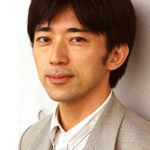 |
Chair:
Hajime Yano (Japan), 2022 – 2026 (yano.hajime – at – jaxa.jp) |
 |
Vice-Chairs:
Bernard Foing (Netherlands), 2024 – 2028*
Rosaly Lopes (USA), 2024 – 2028* |
Intercommission/Panel/Task Group Liaisons:
SC C: Martin A. Cordiner (USA), 2022 – 2026
SCs D: Shyama Narendranath (India), 2024 – 2028
SC E: Christophe Sotin (USA), 2022 – 2024*
SC E: Diego Turrini (Italy), 2022 – 2026
SC F: Heather Smith (USA), 2022 – 2026
SC B2 to Panel on Satellite Dynamics (PSD): Heike Peter (Germany), 2020 – 2024*
PCB: Varun Sheel (India), 2022 – 2026
PE: Rosalba Bonaccorsi (USA), 2024 – 2028
PEX: Yeon Joo Lee (South Korea), 2024 – 2028
PIDEA: TBD
PMLDS: Hajime Yano (Japan), 2025 – 2029
PPP: Alexander Hayes (USA), 2024 – 2028
PRBEM: Manuel Grande (UK), 2024 – 2028
PSW: Manuel Grande (UK), 2024 – 2028
Terms of Reference:
The planetary bodies of the solar system (including the Earth), especially evolutionary, dynamic and structural aspects; planetary atmospheres are included insofar as these are essential attributes of their main body; smaller bodies, including satellites, planetary rings, asteroids, comets, meteorites, and cosmic dust. (Explanatory remarks: The studies of this Commission refer mainly to space studies, especially through the use of space vehicles. The aspects of planetary atmospheric studies to be emphasized are those which relate the atmosphere to the observed surface and the interior of the planet. Structural aspects include geodesy, the observation of planetary figures, where appropriate, and potential fields, including the gravity field.)
Sub-Commission B1: Small Bodies
Chair:
Ernesto Palomba (Italy), 2024-2028* |
Vice-Chair:
Tomoko Arai (Japan), 2024 – 2028
Patrick Michel (France), 2024 – 2028 |
Terms of Reference
This Sub-Commission covers all small bodies in both the Solar System and other planetary systems such as comets, asteroids, dwarf planets, Trans-Neptunian Objects, cosmic dust, meteoroids, meteors, meteorites, planetary rings, and irregular satellites as well as interstellar dust and interstellar asteroids/comets. Through theoretical, computational, observational, analytical, experimental and exploratory studies, the Sub-Commission explores such topics as sources and sinks, formations and evolutions, dynamics, distributions, physical and chemical properties, compositions and structures, mutual interactions, impact and other processes of these objects.
Back to top
Sub-Commission B2: International Coordination of Space Techniques for Geodesy (a joint Sub-Commission with IUGG/IAG Commission I on Reference Frames)
Chair:
Christopher Kotsakis (Greece), 2021-2024 |
Vice-Chair:
Steve Vance (USA), 2022-2026
|
Intercommission/Panel/Task Group Liaisons:
PSD: Adrian Jäggi (Switzerland), 2024 – 2028
Terms of Reference
To develop links between various groups engaged in the field of space geodesy and geodynamics by various techniques, coordinate work of these groups, elaborate and propose projects implying international cooperation, follow their progress and report on their advancement and results.
For further details please visit the IAG page of Commission 1 on Reference Frames.
Back to top
Sub-Commission B3: The Moon
Chair:
Megha Bhatt, (India), 2024 – 2028 |
|
Vice-Chairs:
Heather Smith (USA), 2022 – 2026 (heather.d.smith – at -nasa.gov)
Christian Woehler (Germany), 2024 – 2028
|
Terms of Reference
Sub-commission B3 covers all aspects of lunar science and exploration. The Moon is a natural laboratory for multiple aspects of planetary science, including the origin and evolution of the Earth-Moon system, and is a focus of many current research activities. Current lunar research includes remote sensing and in-situ measurements of the lunar surface, laboratory analyses of lunar samples, and theoretical modelling of the Moon’s internal structure and evolution. These activities are supported by a growing number of recent, on-going, and planned space missions to the Moon, which will further enrich understanding of our closest celestial neighbour. The Moon is also likely to be a testbed for in-situ resource utilization (ISRU) activities, as well as an accessible platform that may facilitate further space exploration activities. Anyone interested in these and related topics is welcome to contribute to the activities of this sub-commission.
Back to top
Sub-Commission B4: Terrestrial Planets
Chair:
Gerhard Kminek (ESA/ESTEC), 2022 – 2026 |
Vice-Chairs:
Fabrizio Dirri (Italy), 2024 – 2028
Varun Sheel (India), 2024 – 2028*
Yeon Joo Lee (South Korea), 2022 – 2026 |
Terms of Reference:
Sub-commission B4 covers all aspects of the science and exploration of the terrestrial planets Mercury, Venus and Mars. The scope ranges from analytical modelling, laboratory and analogue field tests, mission data and new science results and payload developments associated to past, on-going and planned missions, that provide insights in the formation and evolution of terrestrial planets. We also welcome comparative aspects of the terrestrial planets together with terrestrial exoplanets. Anyone interested in these, and related topics is welcome to contribute to the activities of this sub-commission.
Back to top
Sub-Commission B5: Outer Planets and Satellites
Chair:
Morgan Cable (USA), 2022 – 2026 (morgan.l.cable – at – jpl.caltech.edu) |
|
Vice-Chairs:
Sandrine Guerlet (France), 2021 – 2024
Anezina Solomonidou (Greece), 2022 – 2026
|
Terms of Reference: TBD
Back to top
Sub-Commission B6/E4: Exoplanets Detection, Characterization and Modelling
Chair:
Francesca Altieri (Italy), 2022 – 2026* |
Vice-Chair:
Michael Ireland (Australia), 2022 – 2026* |
Terms of Reference
Sub-commission B6/E4 deals with Exoplanets detection, characterization and modelling.
The recent discoveries of nearly a thousand of extrasolar planetary systems have opened up a number of new questions about their properties, physical conditions along with a rethinking of the concepts of habitability and life. In this context, it is not obvious whether a planetary system like our own solar system is common or unusual in the Galaxy. Planets may form and orbit around stars of almost every kind. We have found many planets which we call exotic, i.e. very close to their parent star, in highly eccentric orbits, or around binary systems, in a word very different from planets in our solar system.
Recent observations have shown how diverse can be the physical conditions of planets, both in structure, with fluffy or very dense planets, and in the composition and atmospheric stratification. The key word is diversity.
Understanding the origin of such diversity is the goal of many of the new studies and current projects. Such activities may cover both scientific and technological aspects and could include:
- Analysis of the current and proposed projects for future observations
- Analysis of diversity of extrasolar planets
- The Solar System in the context of extrasolar planetary systems
- Definition, even non-conventional, of habitability and life
- Definition and detectability of organic pre-biotic material and biomarkers
- Laboratory activity supporting modelling and atmospheric properties studies
Back to top
* (after officer term) = second and final term in the office indicated